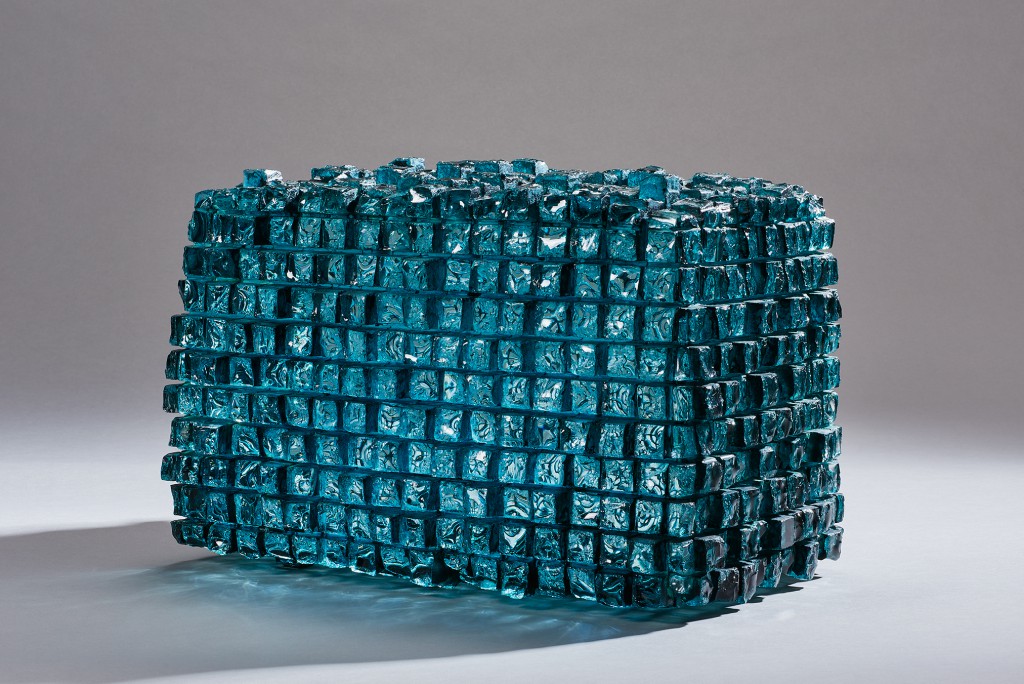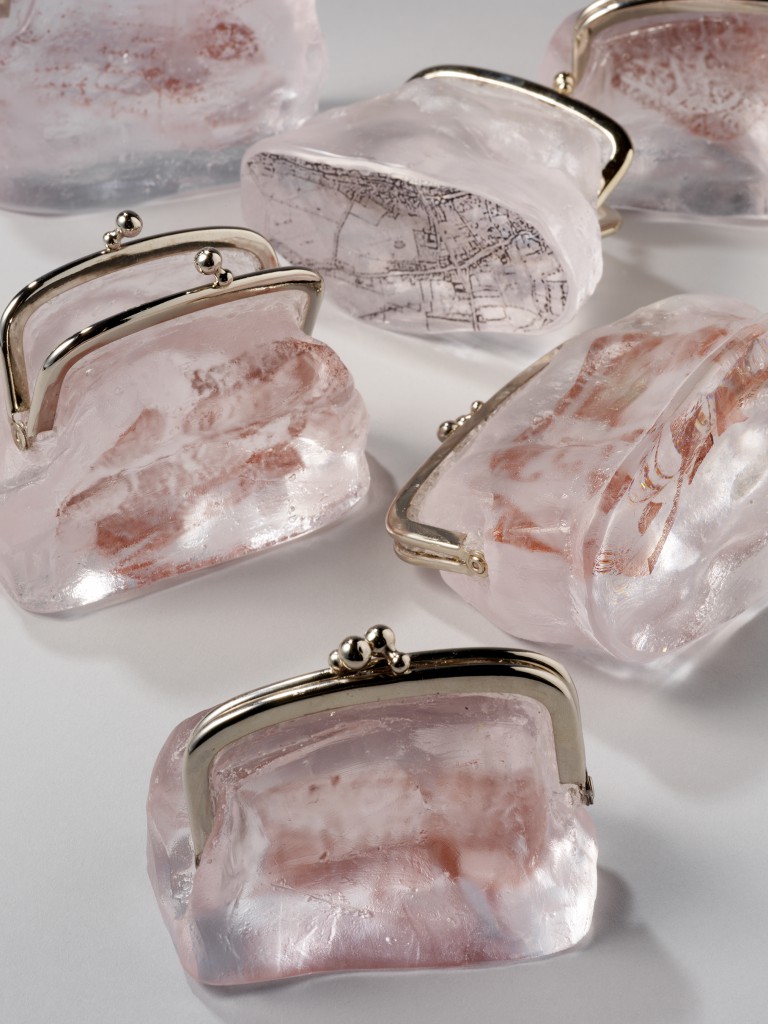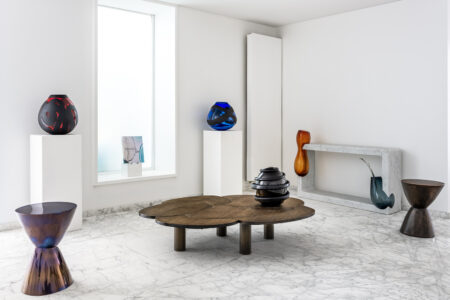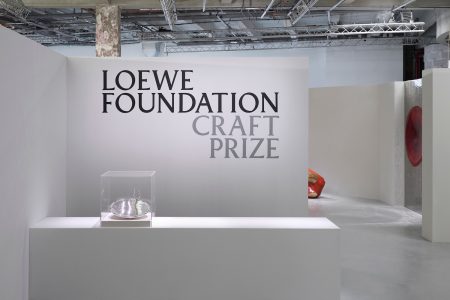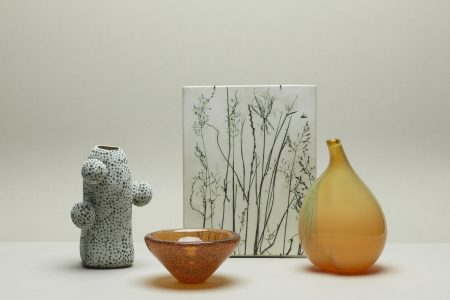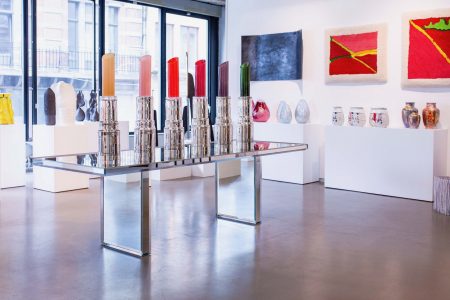Le MusVerre: The Cradle of Glasswork
TLmag spoke with MusVerre director Aude Cordonnier and artistic director Anne Vanlatum to find out more about the glasswork museum.
The Avesnois area of France and its wooded countryside, in particular around the town of Sars-Poteries, are defined by the distinctive landscape and by the emblematic figure of Louis Mériaux and his glass workshop. The Avesnois has also hosted major glasswork events, such as the Symposium international du verre in 1982 and the Verre & Architecture colloquium in 1984. Artist residencies have punctuated the life and growth of the glass collection. Together, these events have left indelible, unusual traces captured in the glasswork museum, MusVerre, located in France’s Nord department. The museum, whose new facility was inaugurated in early October, brings together a brilliantly curated, eclectic mix of works. On the one hand, there are semi-industrial works from 1801-1937 known as the bousillés, which MusVerre translates as bungled objects. On the other, the museum houses a major collection of 750 contemporary works. MusVerre’s collections are steeped in vitality, fed by the work of artists from Europe, Japan, the United States, Australia and beyond. TLmag spoke with MusVerre director Aude Cordonnier and artistic director Anne Vanlatum to find out more.
TLmag: It has been 40 years since Louis Mériaux opened his glass workshop, before later relocating to the Château Imbert with his collection of works by village glassmakers. How do you view this life-filled collection accumulated over the years?
Aude Cordonnier: The collection links the past, as represented by the bousillés, and the future, as represented by the contemporary glasswork. It also links this specific place, as represented by the glassmakers of Sars-Poteries, to the rest of the world, as represented by the many international artists on display. MusVerre is an ode to creation. The museum brings a message of hope to the Avesnois, an area that has been hit hard, both economically and socially.
TLmag: How did you design the museum’s layout with architect Raphaël Voinchet of the firm W-Architectures? As soon as you set foot in the space, it feels like you have entered the intimate world of glasswork, thanks to the contemporary Hainaut limestone façade. The stone is reminiscent of the crystalline structure of silica, which played a role in the birth of glass itself.
A.C.: The museum affords visitors a truly unique experience. First, you discover the bousillés and the historical collection, which are displayed in three dark, narrow rooms, true cabinets of curiosities. Then you enter the part of the museum where major works from the contemporary collection are exhibited on a winding series of long stands in a spacious, white, light-filled room. The visit finishes with small, contemplative spaces. These intimate, muted alcoves feature contemporary pieces that are grouped together around themes such as nature or oddity. Throughout the museum, large windows offer views of the surrounding woodlands.
TLmag: As artistic director, what is your role at the new MusVerre and how has it changed since you left the Château Imbert?
Anne Vanlatum: I have been the artistic director of the museum since December 1997. I actively expand the collections through acquisitions and donations, thanks to my research and the people I meet. It is important for me to give the works their proper due by presenting them in a thoughtful, balanced way. The MusVerre offers expansive, unadorned spaces that allow for a new, spacious display style. MusVerre also has a temporary exhibition space for installations, thematic exhibits, solo shows and partnerships with other museums. I invite the artists to come teach courses at our workshop and I work closely with the artists in residence. I always try to stay abreast of what’s going on internationally and keep in touch with artists and colleagues from other museums and galleries.
TLmag: You selected the Belgian artist Ann Veronica Janssens to inaugurate your temporary exhibition space. Janssens is an artist who is fascinated by glass and laminated industrial glass in particular. What do you see as her relationship with your collections?
A.V.: The entire museum is dedicated to glasswork. Given the strength and poetry of Ann Veronica Janssens’ work and its use of spatial interference, she seemed like the obvious choice for the inauguration of the new museum space. Regarding the permanent collections, Janssens’ work highlights a new, more minimalist, conceptual approach. She sometimes chooses to use glass in her work because of its specific qualities. Ann Veronica Janssens’ work invites visitors to move around the room and interact with optical illusions, thereby causing the pieces to change colour and tell different stories. This installation also gave us the chance to showcase Raphaël Voinchet’s architecture. A large corner window provides a glimpse of the landscape and lets in the beautiful daylight. The artist uses the properties of light to reveal colour. She plays around with refractions and reflections. The meeting between the space and the installation underscores the pure style of the building and the glasswork installation.
MusVerre artistic director Anne Vanlatum has selected ten pieces of special note from the museum’s bousillés and contemporary collections for TLmag.
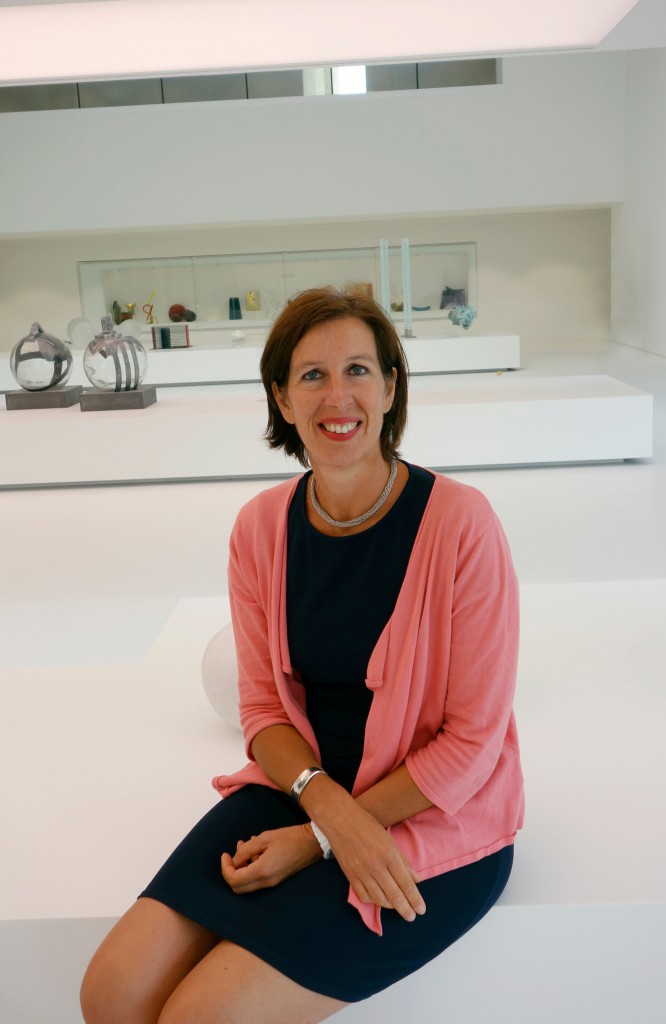
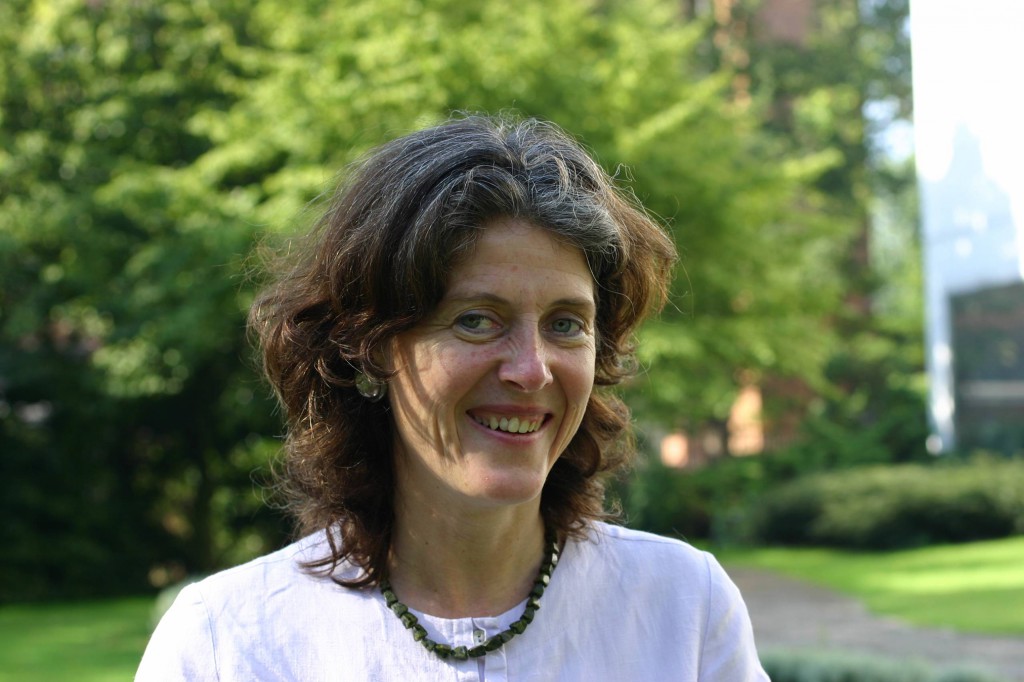
![L’Encrier revanche [Revenge inkwell] These purely decorative inkwells are a real technical feat. The ink reservoir, made from blown, coloured glass, is in the shape of a goblet. The goblet is then encased in thick, transparent glass, which is cooled and then carved into more or less complex patterns. The coloured glass symbolises the ink and the goblet is a reference to the glassblowing profession. According to tradition, the word revenge refers to the superiority of the glassmakers’ technical dexterity over intellectual knowledge. These so-called revenge inkwells have never held any ink.](https://tlmagazine.com/wp-content/uploads/2017/06/1-encriers-819x1024.jpg)
![L’épi de faîtage [Finial] Finials are whimsical ornaments that decorate rooftops. Typically they are made from terra cotta, faïence, lead or zinc. The Sars-Poteries finials are made from glass. The remaining finials in the town are a testament to its glasswork past and comprise part of the heritage that must be protected and handed down to the next generations. In 1999, the museum took on the tradition and began blowing new glass finials to decorate the roofs of houses in neighbouring towns.](https://tlmagazine.com/wp-content/uploads/2017/06/2-episfaitage-1024x819.jpg)
![Verre à deux sous ou quat’sous [Two or four pence glass] The unusual shape of these glasses arouses curiosity. They are made up of two differently sized but identically shaped glasses joined at their bottoms to form an hourglass figure. Oral tradition has it that just after workers received their pay check at the start of the month, they would drink a four-pence drink from the large glass. Near the end of the month, they would switch to the small glass as they could only afford a two-pence drink of their favourite alcohol.](https://tlmagazine.com/wp-content/uploads/2017/06/3-verre2sous4sous-683x1024.jpg)
![Bouteille Passion [Passion bottle] The blowpipe glass-blown bottles of Alexandre Soudart (1852-1934) refer to the pilgrimage to Liesse in the department of Aisne. The Cartesian diver figurines that float on two levels inside the hermetically sealed, water-filled bottle are religious symbols associated with the passion of Christ.](https://tlmagazine.com/wp-content/uploads/2017/06/4-alexandre_soudart-689x1024.jpg)
![Karen LaMonte, Seated Dress Impression with Drapery, 2007 The dresses of Karen LaMonte conjure up absent bodies as they spring forth like apparitions or spectres, accentuated by the milky, opalescent glass finish. They enclose imprints of absent bodies, as though they had stolen them: the trace of a navel, the curve of a bosom or knees and the lines of a back. LaMonte’s work was shown in France for the first time at MusVerre’s 2010 solo exhibition Réflexions Féminines [Feminine Reflections].](https://tlmagazine.com/wp-content/uploads/2017/06/5-lamonte-seated-dress-impression-e-martin-pollack-683x1024.jpg)
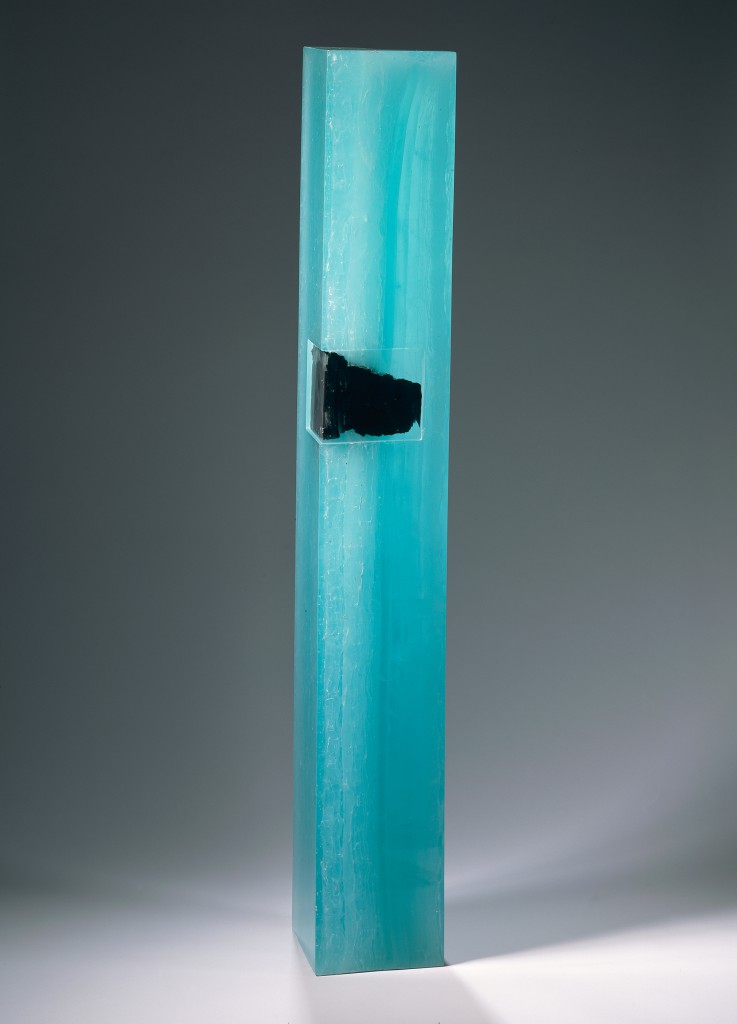
![Jean-Pierre Umbdenstock Jean-Pierre Umbdenstock (1950-2011) examined the relationship between glass, writing and images. Black ink traces a path across neutral, transparent glass, forming images, signs and stories that fill up all available space, as in Flaconsigne I and L’Encrier revanche revisité [The Revenge inkwell revisited].](https://tlmagazine.com/wp-content/uploads/2017/06/7-umbdenstock-819x1024.jpg)
![Aleš Vašiček, Monochrome bleu [Blue monochrome], 2011 Aleš Vašiček was born in the Czech Republic in 1947. He chose to work with glass in order to sculpt light and create harmony between humans, the earth and the world. Vašiček seeks out the secrets of the depths by referring to natural elements, revealing materials’ volumes and giving them an added dimension. This blue glass both absorbs and reveals light, as a painting would, by contrasting a strong, opaque surface with a pure, transparent one. The artist uses the density of the material to play around with nuances. The abstract forms guide us toward the beauty of the materials and monochrome colours and toward the volume and subtlety of the transparent surface.](https://tlmagazine.com/wp-content/uploads/2017/06/8-vasicek-819x1024.jpg)
